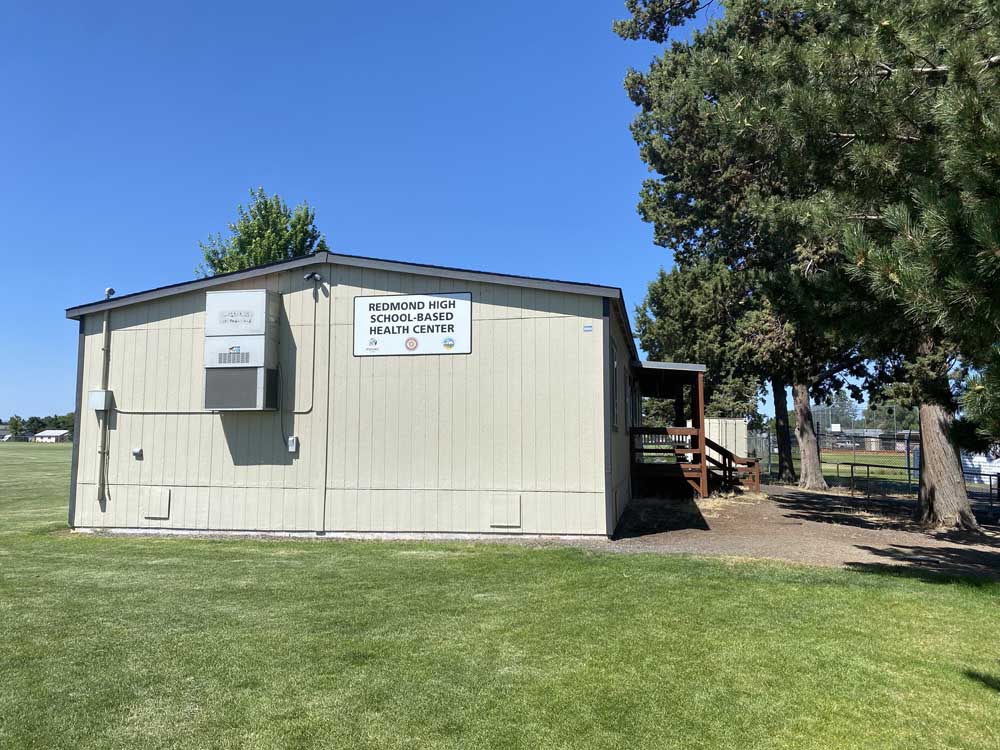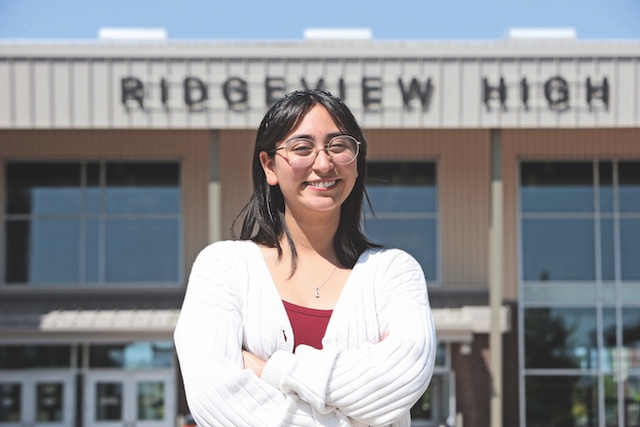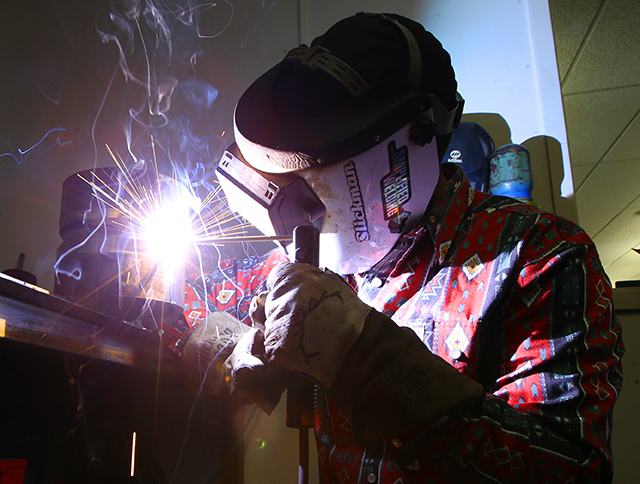Redmond High’s health clinic gets upgrades to support student health
Published 10:00 am Monday, July 15, 2024

- Outside of Redmond High school-based health clinic, located on school property outside the main high school.
Even with school out for the summer, Redmond High School’s medical clinic remains open for students and local children for primary care.
School-based health centers have been operating in Oregon since 1986. They are primary care centers equipped with doctors, nurses and physician assistants. At Redmond High School, students also have access to dietitians, nutritionists, psychiatrists and therapists, though they aren’t stationed there all the time.
“Historically, school-based health centers have reduced absenteeism,” said Tamarra Harris, manager at Mosaic Community Health, which operates the clinic. “The whole purpose is that a kiddo can walk over midday, see the provider and go right back to class.”
According to Jessica Jacks, Deschutes County Health Services prevention and health promotion program manager, there can be anywhere from three to six staff members on site to serve student walk-ins and and medical checkups.
“Small, but mighty,” Jacks said.
According to Jacks, there are 88 school-based health clinics in Oregon, with six in Deschutes County. Two are in Redmond, one at Redmond High and a second at M.A. Lynch Elementary.
Redmond High’s clinic has come a long way since it opened in 2017, said Harris. According to Jacks, the clinic was only open two days a week and saw just 50 patients in its first year. Now, the clinic is open Monday through Thursday, year-round, and typically sees roughly 5,000 patients per year. Hours can be found on Mosaic Community Health website.
Harris said Redmond High’s clinic focuses on monthly physicals and keeping children up to date with immunizations. They also put a lot of effort toward mental health and combatting anxiety.
“We are in the midst of an epidemic of declining rates of adolescent mental health,” Mosaic’s pediatric medical director Ellie Millan said. “When we can improve access, that ultimately improves the outcome for youth so that they can stay enrolled in school, complete high school and go on to pursue higher education or the next steps in their career.”
The clinic has seen a rise in eating disorders, Harris said.
According to USA Today, Oregon has the highest rate of childhood depression in country, with more than 21% of youths.
Additionally, throughout the United States, one in six children from ages 6 to 17 have a mental health disorder and suicide remains the second-leading cause of death from ages 10 to 14, according to the article.
Through physical and mental health services, students around Oregon have felt thankful for SBHCs and the staff. Many of their stories can be found on Oregon’s School Based Health Alliance’s website.
“I wanted to end my life,” one David Douglas High School student said. “(Heidi Willis, my teacher,) found out that our school-based health center offers counseling to students who do not have health insurance. She strongly encouraged me to go there and see if I could set up an appointment. So I did. Since then, I have realized how grateful I am to have her in my life because without her I wouldn’t be here, and I wouldn’t have found out about the help I could receive at the health center.”
SBHCs also works with students directly to hear their input on what resources their clinic should have. The Youth Action Council engages with SBHC staff to encourage other students to use the clinic and weigh in with suggestions to improve the health center.
The YACs have worked with designing “youth-friendly” clinics in the past and ultimately influenced how Redmond High’s clinic renovation looks.
As for Ridgeview High School, “funding is an obstacle at the moment” to place a SBHC there, Harris said.
The Redmond High clinic recently got a fresh new look, thanks in part to a donation of $19,500 from the Oregon Community Credit Union Foundation.
Mosaic Community Health used the funds to renovate the health center and give it a “cleaner, nicer and newer” look, according to Millan. The renovation was completed a month ago.
“(The center) is what ultimately impacts the patients perceived quality of care,” Millan said. “If they’re in a space that appears clean and friendly, I think it affects their perception of the care they receive.”
Mosaic Community Health said the money was used on new flooring, a fresh coat of paint, new artwork, new furniture and new equipment.





